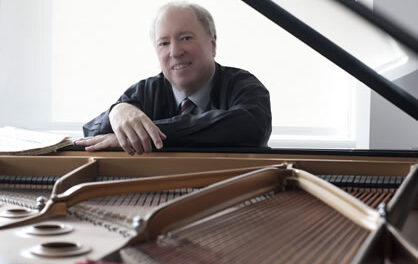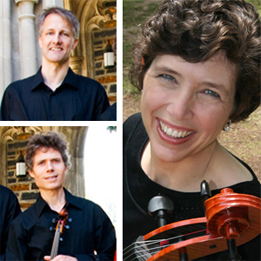The Calidore String Quartet gave a return concert as part of the Chamber Music Wilmington series. Their previous concert in Beckwith Recital Hall was a little over two years ago. Since then they have released another recording, toured nationally and internationally, and won, among other awards, an Avery Fisher Career Grant, one of the most prestigious accolades in the music world.
If at all possible, this second concert was even better than the one audiences were treated to previously. To write about it is essentially to list fine moments in an evening of consummate chamber music. The characteristics one heard over and over included a compelling definition of mood and dramatic unfolding of each piece, complete rhythmic precision, and seamless interchange as lines moved among instruments. One should also mention the group’s exquisite pianissimo dynamic.
The first piece was the Quartet Op. 44, No.1 in D by Felix Mendelssohn. In the exuberant mood of the first movement, one admired the fine transition to the second theme and later, the delicate interplay of the motive among the instruments. The elaborate passagework seemed effortless in its accuracy and its shaping of phrase. The second movement had beautiful swells, and the cello line grew wonderfully into the upper melody. The pp at the return was very fine.
The third movement was wonderfully meditative and had perfectly matched detached articulation. There was a beautiful whispering entrance after a peaking long line. The last movement was exciting and virtuosic.
The following piece was a recent work by Caroline Shaw, who is originally from Greenville, North Carolina. She now makes her base in New York. In 2013 she won a Pulitzer Prize, the youngest person ever to win this prize in music.
The quartet performed her First Essay: Nimrod, written in 2016. This is essentially a lyrical piece with a free-flowing progression of material sliding in and out of tonal combinations. There was a lush cello melody overlaid with rhythmic accompaniment. Forceful pizzicato notes in the cello were a recurring idea, and there were a couple of lovely passages with the lower instruments accompanied by the violins. At eight minutes, this attractive piece had a sense of imagination which made the listener want to hear it again.
The first half concluded with Quartet No. 9 in E-flat, Op. 117 by Dmitri Shostakovich. Shostakovich was one of the finest composers of the twentieth century, and this quartet is an example of why. Its five movements are played without pause and exemplify the composer’s range of expression, from ominous reflection, to over-the-top parody, to ferocious outbursts.
The Calidore projected the unfolding of the work with complete cohesion. The recurring rhythms in the first and third movements were sharp; the reflective fourth movement was most expressive. A notable passage was in the last movement, where the cello carried a wailing line over a haunting ppp tremolo from the other instruments. One wondered, in this compelling performance, whether the sometimes harsh and furious sections of the large-scale final movement could have been still more ferocious.
After intermission came a single work: the Quartet in C, Op. 59, No. 3 by Beethoven – changed from the originally programmed Op. 59, No. 1. One of the great works in the quartet literature – indeed one of the great masterworks composed by anybody – this quartet was given a consummate reading. In the introduction, one reveled in the precision of attack and the intensity of the mysterious chromatic wanderings. In the upbeat main section, the rhythms built great energy and then came a most dramatic ppp. The first violinist treated his florid lines with improvisatory freedom, an attractive touch.
The second movement carried a lovely dark tone, rich in the lower strings. The sforzandos were anguished in their expression and another exquisite ppp preceded the return of the theme. The third movement had a gentle dance sense, with a rustic mood in the trio reminding one of Beethoven’s appreciation of folk tunes.
The last movement, at the utmost presto tempo, was thrilling. One of the most exciting movements ever written, it was carried with flawless virtuosity and equally flawless phrasing.
The concert was wide in its scope and of unusual length. Not a moment too long. On the contrary, after the masterful performance of the Beethoven and its exhilarating ending, one could gladly have stayed for more.












